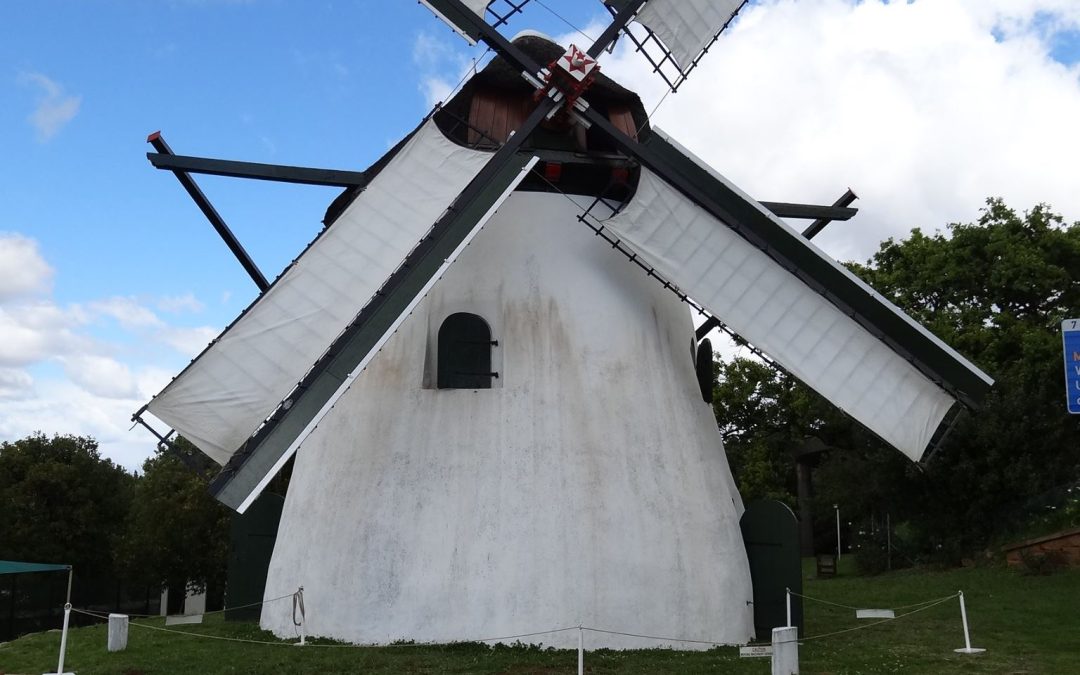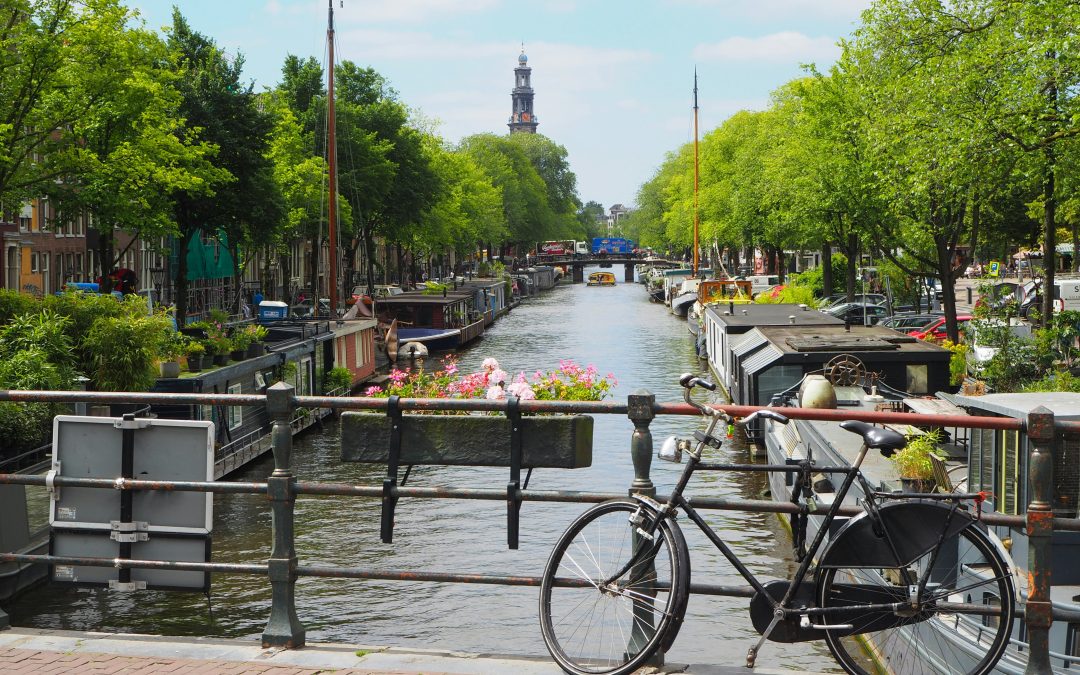We here in England sailed surprisingly easily through the endless Brexit media storm and the grey, wet June because we had an emerging Botswana expedition as our trump card.
For years I intended to go back to the Moremi Game Reserve; a group of us went there in our final year at the University of Pretoria. Oom Neels du Preez, a dear but eccentric dentist, took us there at that time with his two Land Rovers and the romance of the four-wheel-drive expedition stuck in my memory. Later on, Mariaan and I cruised in Savuti with Francois and Tana Coetzer, accompanied by Petri Viljoen who was doing research on lions; that was the first time we really came face to face with a lion.
Les Sharpe, an old friend who lives in Sydney, proposed that we go camping in the Central Kalahari and Moremi. He regularly goes to South Africa to cast his sculptures and he had all the necessary camping equipment and contacts. I met Les in the seventies in London while he was studying at Croyden School of Art, his wife Christelle worked at the South African embassy and I started practicing in Wandsworth. Our first trip was to Aviemore in Scotland for an Easter break; years later Transkei and Namibia followed. Les was excited about the fact that Piet Botha, a former classmate of his, and his capable wife Carin, would keep an eye on us as they were experienced campers and familiar with Botswana.
‘Blind date’ for Khwai
Mariaan and I were busy making arrangements when, eight days before our flight, we received the bad news that Les was admitted to the hospital. ‘It took us about a decade to at last start making arrangements to go to Botswana and now everything is going adrift,’ I told a patient. The doctors told Les that he had to undergo tests and would not be able to fly for a few weeks, so Mariaan and I considered alternative destinations. But we’ve already hired a four-wheel-drive vehicle and we really wanted to visit Botswana, so although we have never met them, we decided to go with Les’s friends Peter and Carin. We discussed it with Christelle and she then finalised our ‘blind date’ with the Bothas. We agreed to meet on Peet Koen’s beautiful farm; he is an old friend, formerly from Pretoria and nowadays a well-known game farmer in Ellisras.
Our minds were set on the Bushveld and we looked forward to our flight to Johannesburg.
Confusion with our flight
We noticed that BA flights were much cheaper from Frankfurt and therefore we booked likewise. But we still had to fly via Heathrow and it was with our return flight from Frankfurt to Heathrow that things went terribly wrong. As a result of a ‘go slow’ strike by air traffic controllers we arrived almost two hours late at a chaotic Terminal 5 – and missed our connecting flight to Johannesburg. Literally hundreds of dazed passengers who missed their flights anxiously ran round in circles. At the end we had to fly via Cape Town to Oliver Tambo – without our suitcases. Sometimes we really do make life difficult for ourselves. Mariaan’s suitcase arrived after a day, but I quickly had to buy a lot of stuff to see me through.
Our adventure kicks off
All the stress and anxiety simply evaporated when we left the N1 behind. We sensed that we were in the Bushveld when we saw the wonderful old marula trees and place names like Matlabas and we stopped at all the colourful kiosks with their homemade delicacies.
It was great to see Peet and Alma again and we immediately liked the Bothas, but immediately there was a hitch: a bolt had broken and the trailer’s wheel came off. Early the next morning Piet had fixed the damaged fender with a jack before we drove to Ellisras to get the bolt replaced. The 4×4 specialists in Ellisras, or Lephalale, were very helpful and even served us coffee while we waited. Then we hit the road for the 800 kilometres to Maun. Our first town in Botswana, Mahalapye, was important for Mariaan, because her father, Dr Koos du Toit, practiced there for a while about 70 years ago before he settled in Zeerust.
Then we drove through a pretty boring part of the country with colourless villages and hamlets. The many late night chats started to wear me down and for the first time since I started driving in 1968 I dozed off for a few seconds just outside Serowe and our vehicle left the road. The Toyota Hilux bucked a bit, but we came to a halt unharmed and I appreciated the enlightened applause of the group waiting at a bus stop. It happened in a blink and made me realise how quickly things can go wrong. Thanks to the thorough Bothas our two vehicles were in radio contact and it helped us to keep in touch constantly because we had to be on the lookout for cattle, goats, donkeys or dogs in the road all the time. Especially the last piece in the dark was nerve-wracking.
We arrived late and very tired at Maun and quickly helped Pete and Cari to pitch camp at the Sedia Hotel’s campsite. The next morning, after a hearty breakfast, we first paid for the campsite at Khwai. The office is situated near the busy Maun airport and the colourful, bustling, chaotic and dusty place created a Wild West feeling. Four-wheel-drive vehicles with guides and tourists, animals (mostly donkeys and goats) and traders could be seen everywhere.
A few days in paradise
The 140 kilometres to the Khwai part of Moremi took us about three hours and I got stuck once when I did not properly switch on the Toyota’s four-wheel drive. We stopped on the way at a beautiful, arboreous waterhole where we had a beer and enjoyed the peace and quiet. Piet showed us where the elephants scoured away the bark and basically polished the trees. We pitched camp at stand number Mag3 in the Khwai Community Camp with its beautiful view of the river. The lions started roaring early the first night and we made a huge fire. The next morning our automatic camera showed that a hyena came sniffing around our fire’s remains during the night. Then we could start appreciating the bustling environment; there was a herd of hippos (about 23) and many waterbuck and sometimes a fish eagle hunted for crabs or something beside the water. The beautiful bateleur with his blunt tail soared over regularly. I noticed that the elephants walked through the adjacent campsite on their way to the water and that the campers were quite laid-back about it.
We decided to cruise but not too far and we were rewarded with seeing a lioness across the river. It seemed as if she was calling another lion and we could hear a male answer. As soon as it was dark, someone told us that the lions were coming in our direction, and we did not know if we should go and see or just wait in our cars. Afterwards we were rewarded with Cari’s delicious curried chicken. Mariaan’s notes mention lots of laughter but also how scared she felt.
Goliath among us
On Thursday we drove all the way to Chobe before we relished a hearty brunch of mince and porridge. We saw the two lions of the previous day across the river, trying to mate. The young male had a distinctive dark brown mane. For the first time we also saw buffaloes and warthogs.
Early afternoon, as soon as Mariaan had her first glass of wine in hand, Cari urgently whispered: ‘He’s coming. Be quiet.’ We looked up and saw a huge elephant, quietly approaching. I scrambled for the camera without getting too anxious, because the big one was heading straight at us. The beautiful, massive animal took his sweet time walking between our two tents; Piet could almost slap him on the shoulder. For all of us it was a memorable moment for the majestic old giant’s presence imposed a mixture of awe and admiration. Afterwards Cari asked Piet why he kept muttering ‘no, no’ and Piet admitted that he did not even realise he was doing it. Later we were surrounded by elephants and could not go to the toilet for a while, but we couldn’t care less; we were still trying to digest that moment. That night was very noisy with lions roaring and mating and hippos grazing loud close to our camp and all the noise kept us awake.
The next morning we saw the lions again. Mariaan described the lioness as ‘beautiful and young with a white beard and belly and lush, black tufts of hair at the end of its tail’. We drove out to see a beautiful private camp called Sable Alley. We relaxed there for a while, watching the elephants frolicking in the water while we were eating and drinking. Back at our camp we could clearly see the lions in the shade across the river. We also saw a herd of elephants with lots of young ones among them heading straight at the lions. The lions started stalking the elephants but they smelled the lions and ran full tilt towards them while trumpeting loud, chasing them away. Again we realised that we were surrounded by a constant series of animal drama, fun and tragedy.
Old Goliath reappeared just as Mariaan was pouring her first glass of white wine (she decided to enjoy it in the middle of the day rather than at night when we had to be alert), but this time he went straight to the big camel thorn tree in our camp. There he bent his knees, pressed his trunk against the tree trunk and shook the tree with such brute force that dead branches, pods and leaves went flying. Then he quietly started picking up pods with the fingers on his trunk. We were taken aback, not knowing what to expect next.
Sad Simba
At two in the morning the loud roaring started, so loud that it’s almost deafening and darn close. Every time another lion answered from across the river. The brutal symphony lasted for hours and at dawn we could make out the lion – a young mail with light mane. When a vehicle approached, he got up, marked the grass thoroughly with his urine and limped away. He was clearly the loser in the battle for the female. I craved coffee, but did not dare leaving the tent. When we finally had our early coffee and rusks in hand, I measured how far from our tents the young Simba had been: six meters away from Piet and Cari and eight meters from us. What an experience!
It was our last day at Khwai and we had to prepare for the next day’s long drive to Kasane.
Look north
The road to Kasane, a town near the Victoria Falls where we would meet Les and Christelle, was 170 kilometres of gravel road and then another 90 kilometres tarred road, stretching through both the Chobe and Savuti-reserves. We got on our way confidently, expecting to arrive there in about six hours. But the sand was extremely loose and it took us ten and a half difficult hours before we finally arrived at Kasane’s outskirts in the dark. Mariaan and I first got stuck and Piet had to haul us out with his Isuzu. Not long after that he got stuck with the trailer. Fortunately Cari warned us over the radio to take a different path. We dug, let more air out of the tires, threw rubber mats – but made no headway against the dry, powdery sand. Fortunately a Botswana Water Affairs truck appeared and quickly hauled the Isuzu out. It was the worst corrugated road I have ever ridden and we had to drive extremely slowly. Most of the time it seemed as if we were driving through one continuous mopane bush with a few open savannahs that I supposed were part of the Savuti Mababe void. Just when we started complaining that there was no life to be seen, we came across six lions on the road. They were very close and the scars on the young lions indicated how hard they struggled to survive. We have never been so relieved to see a neat tarmac – and soon the broad Chobe River as a bonus. The stinking carcass of a young elephant next to the road on the outskirts of Ngoma reminded us how vulnerable even large animals were to the trucks and large four-wheel-drive vehicles. We started seeing the unique baobabs regularly. Apparently there is a hollowed out old baobab behind the Kasane police station that served as a prison long ago, even with a working door. We appreciated the warm showers at the campsite and feasted on the delicious hamburgers at the Chobe Safari Lodge while enjoying the view on the vast Chobe River.
Mariaan and I postponed our return with a day to at least see the Sharpes. After all the stress and uncertainty Les clearly was moved when they arrived in the evening.
The next day we tried to catch a tiger fish but only got hold of three fat catfish. An interesting character rented a boat to us. He was born in Kasane but out of the blue stated that Magnus Malan was still his hero. ‘Why do you say that?’ I asked in surprise. ‘Because he could get things done,’ he answered.
During our last afternoon in Kasane we sailed on a boat on the big old river and enjoyed the beautiful sunset with a beer in hand. It was time to say goodbye to both our old and new friends.
The road back via Francistown was mostly a pleasure, except that I was stopped for speeding just outside Francistown, but the friendly officers let me go after I have made my case. For our last night in Botswana we treated ourselves to a lovely room in a five star hotel. A luxury bathroom and clean white sheets have never been so nice!



















